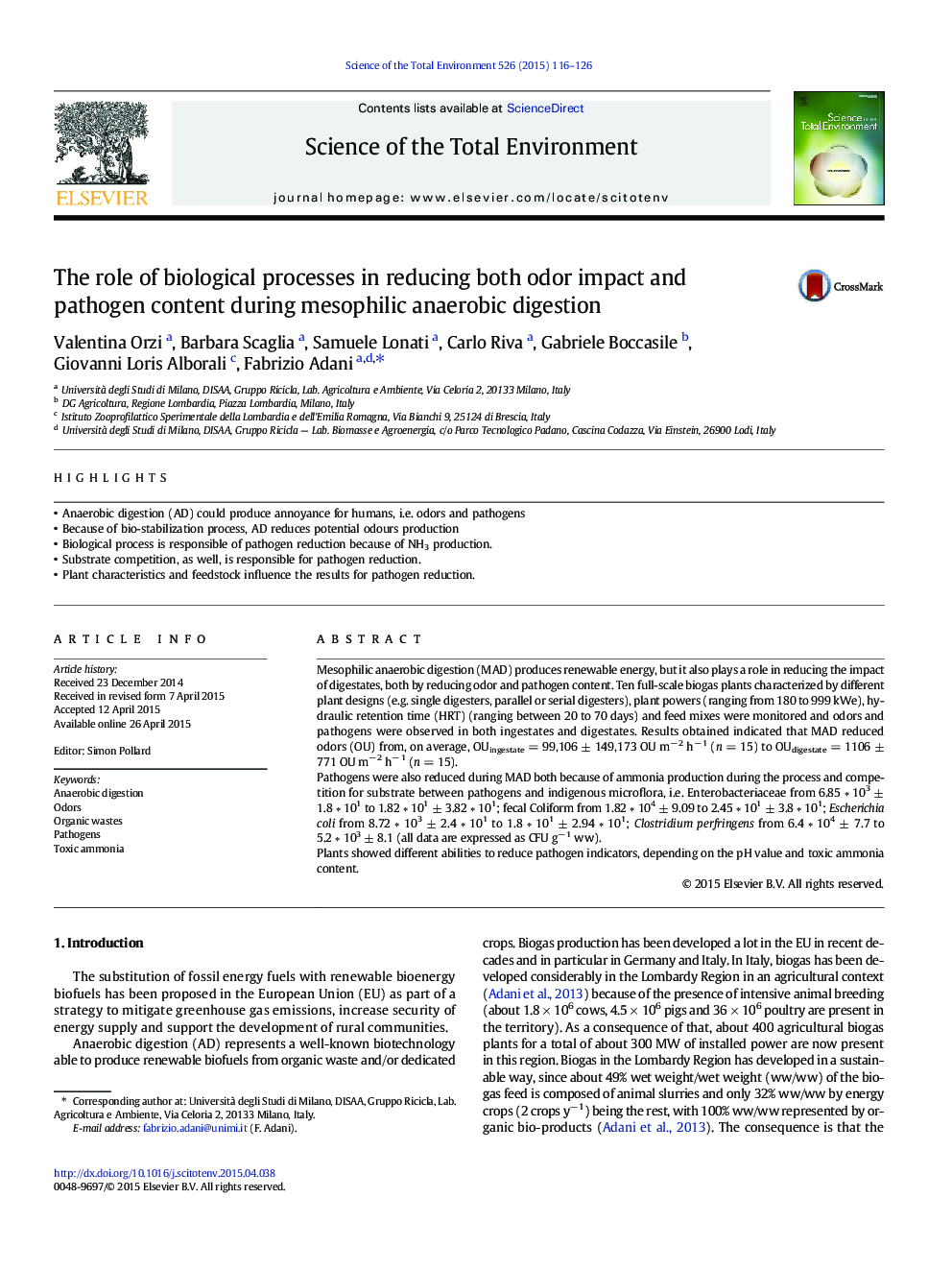| Article ID | Journal | Published Year | Pages | File Type |
|---|---|---|---|---|
| 4428361 | Science of The Total Environment | 2015 | 11 Pages |
•Anaerobic digestion (AD) could produce annoyance for humans, i.e. odors and pathogens•Because of bio-stabilization process, AD reduces potential odours production•Biological process is responsible of pathogen reduction because of NH3 production.•Substrate competition, as well, is responsible for pathogen reduction.•Plant characteristics and feedstock influence the results for pathogen reduction.
Mesophilic anaerobic digestion (MAD) produces renewable energy, but it also plays a role in reducing the impact of digestates, both by reducing odor and pathogen content. Ten full-scale biogas plants characterized by different plant designs (e.g. single digesters, parallel or serial digesters), plant powers (ranging from 180 to 999 kWe), hydraulic retention time (HRT) (ranging between 20 to 70 days) and feed mixes were monitored and odors and pathogens were observed in both ingestates and digestates. Results obtained indicated that MAD reduced odors (OU) from, on average, OUingestate = 99,106 ± 149,173 OU m− 2 h− 1 (n = 15) to OUdigestate = 1106 ± 771 OU m− 2 h− 1 (n = 15).Pathogens were also reduced during MAD both because of ammonia production during the process and competition for substrate between pathogens and indigenous microflora, i.e. Enterobacteriaceae from 6.85 ∗ 103 ± 1.8 ∗ 101 to 1.82 ∗ 101 ± 3.82 ∗ 101; fecal Coliform from 1.82 ∗ 104 ± 9.09 to 2.45 ∗ 101 ± 3.8 ∗ 101; Escherichia coli from 8.72 ∗ 103 ± 2.4 ∗ 101 to 1.8 ∗ 101 ± 2.94 ∗ 101; Clostridium perfringens from 6.4 ∗ 104 ± 7.7 to 5.2 ∗ 103 ± 8.1 (all data are expressed as CFU g− 1 ww).Plants showed different abilities to reduce pathogen indicators, depending on the pH value and toxic ammonia content.
